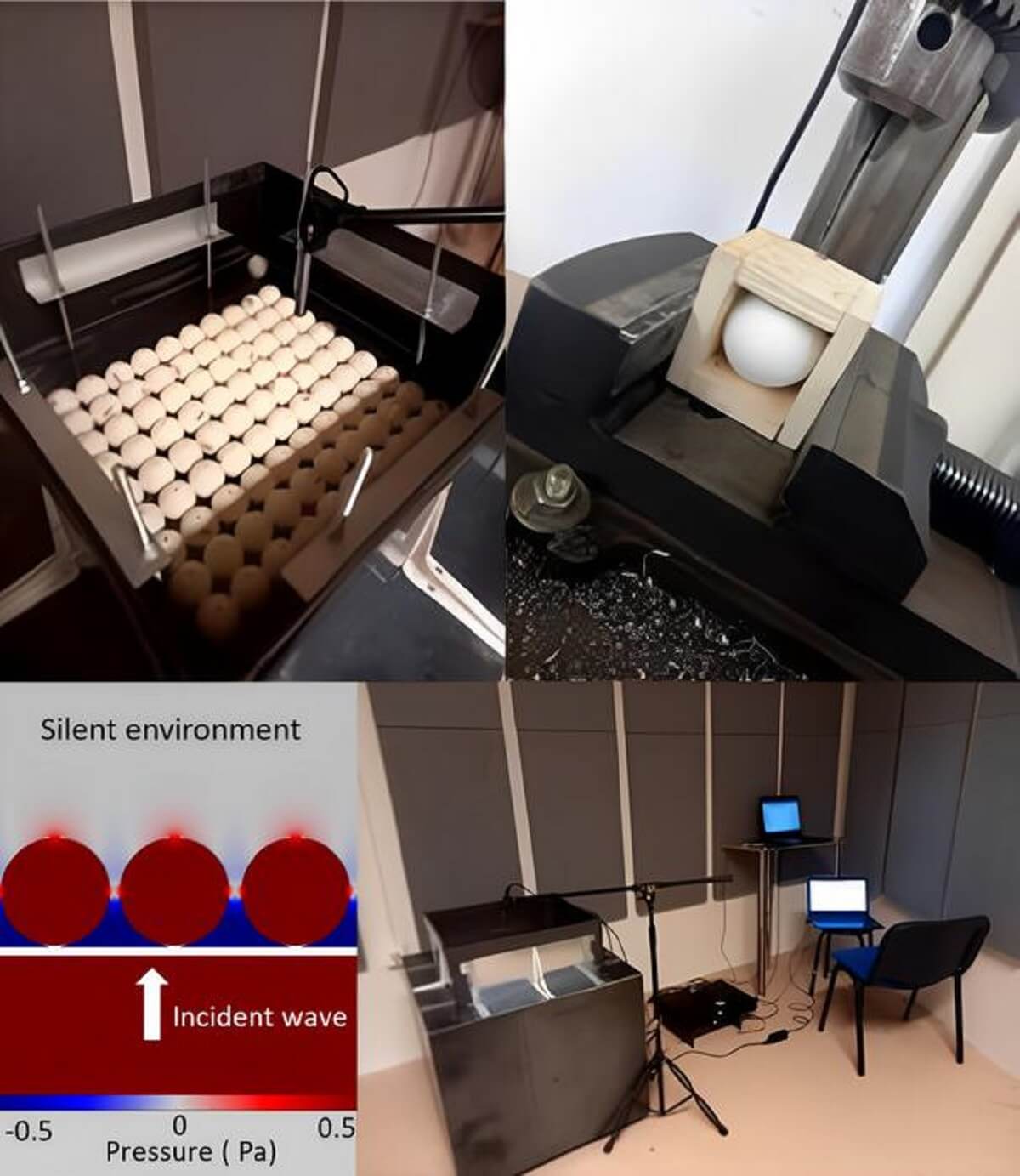LILLE, France — Ping pong balls offer an affordable and efficient solution for noise insulation, according to scientists. With some modifications, their study finds that the lightweight plastic spheres could act as effective sound absorbers.
Past research indicated that chronic exposure to low-frequency noise pollution — a common frustration in cities, near highways, and around airports — can lead to a host of health issues. This urban noise, often perceived as mere background sound, can result in ailments such as earaches, respiratory problems, irritability, and various other long-term health concerns. Moreover, due to its diverse origins and its ability to penetrate structures more readily than high-frequency sound, low-frequency noise proves particularly elusive to mitigate.
However, a recent innovative solution has emerged from a collaborative study between the University of Lille and the National Technical University of Athens in Greece. Researchers have crafted an acoustic “metasurface” utilizing ping pong balls as Helmholtz resonators, offering a cost-effective method for insulating against low-frequency noise.
“Ping pong balls are well-known, everyday objects, present in large numbers all over the world. Our motivation was to use these easily accessible objects to create a low-frequency insulating panel structure,” says study author Robine Sabat in a media release. “Ping pong balls therefore present an economical alternative to acoustic insulators for both low cost and potential recycling.”

An acoustic metasurface is a material deliberately designed to control sound waves. The study’s metasurface consisted of hollow ping pong balls with small perforations, emulating Helmholtz resonators.
“The Helmholtz resonator has the unique ability to capture ambient sound waves precisely at its natural frequency and can be represented as cavities connected to their environment via a narrow neck. The originality of the work was to consider the effect of the coupling between two resonators, leading to the occurrence of two resonance frequencies,” Sabat explains.
This increase in resonant frequencies meant enhanced sound absorption. Building on this success, the researchers expanded their design, creating a panel that resembled a grid of perforated ping pong balls. This increased the range of resonant frequencies that could be absorbed. By varying the number of balls, the number of perforations, and the size of these perforations, the team demonstrated that one can design an effective sound absorption panel without resorting to costly materials.
“The potential of this metasurface extends beyond sound insulation. It can be broadened to achieve various functions similar to other metasurfaces. These functionalities encompass sound focusing, unconventional sound reflection, sound transmission manipulation, and more,” notes Sabat.
The study is published in the Journal of Applied Physics.
You might also be interested in:
- Best White Noise Apps: Top 5 Soothing Sounds Most Recommended By Experts
- Need a mental health boost? Expert says it’s easy — play ping-pong!
- Even a little airplane noise in your neighborhood can ruin your sleep
South West News Service writer Stephen Beech contributed to this report.

